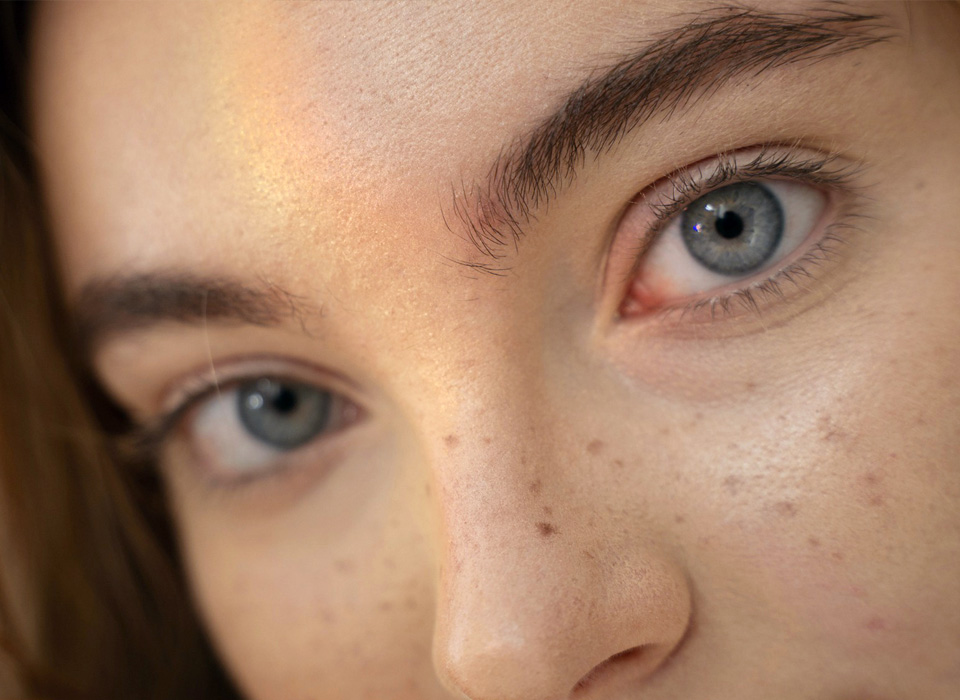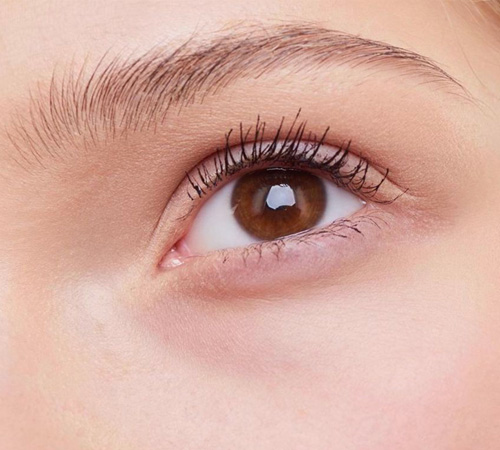
Tear Duct Surgery for Tearing and Watery Eye
Table of ContentsToggle Table of ContentToggle
What Causes Tearing?
Excessive tearing or a watery eye, a condition known as epiphora, can be caused by various factors. Some common causes include:
- Blocked Tear Ducts: A blockage in the tear ducts can prevent tears from draining properly, leading to overflow and watery eyes. This can result from infections, inflammation, or other obstructions in the tear drainage system.
- Dry Eye Syndrome: Paradoxically, dry eye syndrome can lead to watery eyes. When the eyes are too dry, they may become irritated, causing a reflex tearing response to try to lubricate the surface of the eye.
- Allergies: Allergic reactions, such as pollen or pet allergies, can cause excessive tearing due to eye irritation.
- Foreign Bodies: The presence of a foreign object such as an eyelash in the eye can cause excessive tearing as the eye attempts to flush out the irritant.
- Irritants: Exposure to irritants like smoke, wind, or bright sunlight can trigger tearing as a protective response.
- Eyelid Problems: Eyelid conditions, including entropion (inward-turning eyelid) or ectropion (outward-turning eyelid), can disrupt the normal tear distribution, leading to excessive tearing.
- Underlying Health Conditions: Systemic health conditions, including conditions that affect nerve function and autoimmune disorders, can sometimes lead to tearing as a symptom.
How Do You Treat Tearing?
The treatment for tearing or a watery eye depends on the underlying cause. Here are some common approaches to manage this condition:
- Artificial Tears: If the tearing is caused by dry eye syndrome, using artificial tears (eye lubricants) can help keep the eye surface moist and reduce the tearing reflex.
- Manage Allergies: If allergies are the cause, antihistamines or decongestant eye drops may help relieve symptoms. Avoiding allergens whenever possible can also be beneficial.
- Warm Compresses: For meibomian gland dysfunction, applying warm compresses to the eyelids can help improve the quality of tears and alleviate tearing.
- Treat Infections: If an eye infection is the cause, appropriate antibiotic or antiviral medications may be prescribed by a healthcare professional.
- Manage Eye Irritants: If tearing is due to irritants like smoke or wind, protecting the eyes with safety goggles or sunglasses can reduce symptoms.
- Nasolacrimal Duct Surgery: In cases of blocked tear ducts, a procedure known as nasolacrimal duct surgery or dacryocystorhinostomy can be performed to clear obstructions and restore proper tear drainage.
- Eyelid Surgery: In some cases, particularly when there’s a structural issue like an eyelid malposition, surgery may be necessary to correct the problem.
- Medications: Your healthcare provider may recommend certain medications or therapies depending on the underlying cause of the tearing.
It’s important to consult with an eye care professional or healthcare provider to determine the exact cause of your watery eye and to receive appropriate treatment.
What Is Tear Duct Surgery?
Tear duct surgery, also known as dacryocystorhinostomy (DCR), is a surgical procedure that aims to create or restore a pathway for tears to drain from the eye into the nose. This surgery is typically performed to address tear duct blockages, which can result in excessive tearing, eye irritation, and recurrent eye infections.
There are two main types of tear duct surgery or DCR:
- External DCR: In external DCR, an incision is made on the side of the nose near the tear sac, and a new channel is created to bypass the blocked or damaged portion of the tear drainage system. A small silicone tube or stent is then inserted to keep the new drainage pathway open during the healing process.
- Endoscopic DCR: Endoscopic DCR is a minimally invasive approach. It involves the use of an endoscope, a thin, flexible tube with a camera, to access and open the tear duct through the nasal cavity, without the need for external incisions. This method is less invasive and may result in a quicker recovery.
Dr. Sarah Avila is an oculofacial surgeon who specializes in tear duct surgery. She is proud to offer a modern approach and minimally invasive surgery with endoscopic DCR and reserves the external approach for special circumstances. Dr. Avila will determine which option is best for you during consultation.

- Preparation: Before the surgery, you will have a consultation with your surgeon to discuss the procedure, go over your medical history, and address any questions or concerns you may have.
- Anesthesia: DCR is usually performed under general anesthesia, meaning you are completely asleep. In certain cases, Dr. Sarah Avila may perform the procedure under light sedation.
- Surgical Approach: DCR can be performed using one of two main approaches: external DCR or endoscopic DCR.
- External DCR: In this approach, an external incision is made on the side of the nose near the tear sac. A new drainage pathway is made by bypassing the blocked or damaged tear duct. A silicone tube is inserted to keep the new drainage pathway open during the healing process.
- Endoscopic DCR: In this minimally invasive approach, Dr. Avila uses an endoscope, a thin, flexible tube with a camera, to access and open the tear duct through the nasal cavity. This method avoids external incisions and is generally associated with a quicker recovery. Dr. Sarah Avila generally performs endoscopic DCRs.
- Recovery: After the surgery, you will be monitored in the recovery area. You may experience mild to moderate discomfort, swelling, and bruising. You will be prescribed nasal sprays and medication for pain. Recovery times can vary depending on the surgical approach but are generally relatively short, with most patients returning to their normal activities within a few days to a couple of weeks.
- Follow-up Appointments: You’ll have follow-up appointments with your surgeon to assess your healing progress and ensure the new tear duct passage remains open and functional.
What Is the Recovery After Tear Duct Surgery or DCR?
Recovery after dacryocystorhinostomy (DCR) tear duct surgery can vary from person to person, depending on factors like the surgical approach used and individual healing capabilities. Here’s a general overview of what to expect during the recovery period:
- Immediate Post-Op: Right after the surgery, you might experience some discomfort, swelling, and bruising around the eyes and nose. You might also have nasal congestion.
- Stents: There will be a silicone tube/stent placed in the nose to keep the new tear duct passage open. It will be hard to see, but try not to rub the eye or pick inside the nose.
- Pain and Discomfort: Pain or discomfort is usually mild to moderate and can be managed with the prescribed pain relievers.
- Swelling: Swelling around the eyes and nose is common and typically peaks within the first 48 hours. It gradually subsides over the following week.
- Nasal Congestion: Nasal congestion may persist for a few weeks. Using saline nasal spray or a humidifier can help relieve congestion.
- Follow-Up Appointments: You’ll have follow-up appointments with your surgeon to monitor your healing progress. The silicone tube or stent, if used, may be removed during one of these appointments.
- Return to Normal Activities: Most patients can resume normal activities, including work, within a few days to a couple of weeks, depending on the surgical approach. Your surgeon will provide guidance on when it’s safe to do so.
- Full Recovery: Complete recovery typically takes several weeks to a few months. It’s essential to follow your surgeon’s post-operative care instructions diligently to optimize healing and minimize complications.
It’s essential to maintain good eye hygiene and follow your surgeon’s recommendations for any post-operative medications or care. If you experience unusual symptoms, such as severe pain, excessive bleeding, or worsening eye problems, contact your surgeon promptly.

Sarah Avila, MD
Specialization: Eyelid Surgery & Aesthetics
Dr. Sarah Avila is an oculofacial plastic surgeon in Miami, Florida. After completing medical school, Dr. Avila completed a residency in ophthalmology at the Mount Sinai Hospital, followed by a highly competitive two-year ASOPRS-accredited fellowship in reconstructive and cosmetic oculofacial surgery at Emory University. During this fellowship, Dr. Avila focused on plastic surgery related to the eyelids, brows, lacrimal duct system, orbit, and face.



